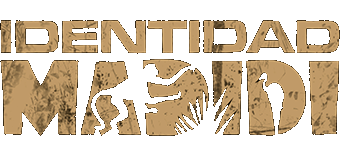A funny-looking bat carrying a tongue one and a half times longer than its entire body was discovered earlier this year by wildlife researchers exploring Bolivia’s Madidi National Park.
Lee la nota completa en el siguiente enlace
Between 2015 and 2018, a communication campaign was carried out to involve the urban population of Bolivia with the scientific expedition Identidad Madidi, through the dissemination of information about the field work and the results of the studies.
Interviews, press releases and reports on the expedition were promoted in the national and international media, as well as publications on the results of the expedition.
A total of 320 news and reports on the Identidad Madidi scientific expedition were published in the written and digital press, web pages, digital magazines and blogs, and on radio and television. Sixty percent of the news items were disseminated internationally, while 40% were disseminated through the Bolivian media.
The publication of 18 reports by The National Geographic and Mongabay was significant, helping to position Bolivia as a country with great biological wealth, and Madidi as important to conserve, potentially as a world heritage site.
The Identidad Madidi Facebook page was created in 2015. It proved to be an effective tool to achieve significant followers and capture their interest in the knowledge of nature and its value for human life. Currently, it has 90,000 followers (93% from Bolivia), with a reach of 29,311,736 people. From 2015 to date, 583 publications (texts, photographs and short videos) have been disseminated and users have made more than 1.3 million interactions.
A funny-looking bat carrying a tongue one and a half times longer than its entire body was discovered earlier this year by wildlife researchers exploring Bolivia’s Madidi National Park.
Lee la nota completa en el siguiente enlace
Descubren en Bolivia un extraño murciélago con una lengua descomunal
Científicos bolivianos han descubierto un extraño murciélago que presenta la lengua más larga entre los mamíferos en relación a su tamaño, mada menos que 8,5 centímetros. El hallazgo tuvo lugar en el Parque Nacional Madidi, considerado el espacio protegido de mayor diversidad del mundo, y es el primer registro de esta especie en Bolivia, informa WCS (Wildlife Conservation Society).
Leer la nota completa en el siguiente enlace
Científicos bolivianos han descubierto un extraño murciélago que presenta la lengua más larga entre los mamíferos en relación a su tamaño, mada menos que 8,5 centímetros.
El hallazgo tuvo lugar en el Parque Nacional Madidi, considerado el espacio protegido de mayor diversidad del mundo, y es el primer registro de esta especie en Bolivia, informa WCS (Wildlife Conservation Society).
Lee la nota completa en el siguiente enlace
La Wildlife Conservation Society (WCS) anunció que la expedición Identidad Madidi, en la selva boliviana, encontró al extraño murciélago Anoura fistulata, especie que se alimenta principalmente de néctar y polen, y que tiene una lengua de 8,5 cm.
Lee la nota completa en el siguiente enlace
Con una lengua de 8,5 centímetros, el murciélago «Anoura fistulata» es la nueva especie descubierta en el Parque Nacional y Área Natural de Manejo Integrado Madidi, del departamento de La Paz, indicó hoy la organización Wildlife Conservation Society (WCS).
Lee la nota completa en el siguiente enlace
WCS reports that the groundbreaking Bolivian scientific expedition, Identidad Madidi, has found a bizarre bat along with a new species of big-headed or robber frog (Oreobates sp. nov.) from the Craugastoridae family in Madidi National Park.
Lee la nota completa en el siguiente enlace
The researchers found the bizarre tube-lipped nectar bat (Anoura fistulata) — the first record of this species in the park. Described in Ecuador just a decade ago and known from only three records. It has the longest tongue in relation to its size of any mammal — stretching 8.5 cm to reach into the deepest flowers.
The frog was found during the first leg of an 18-month long expedition to chronicle the staggering wildlife living in what is believed to be the world’s most biodiverse park.
Lee la nota completa en el siguiente enlace
Just two months into an 18-month exploration of a major Bolivian nature reserve called the Madidi, biologists have come across dozens of animals never before seen in the park—and at least one species completely new to science.
That critter is a frog that’s barely an inch long, with golden goggle eyes and mottled greenish-brown skin across its head and back. Orange skin patches on its inner thighs mark it as a species of robber or big-headed frog, which are native to the Amazon and Andes.
Lee la nota completa en el siguiente enlace
Just two months into an 18-month exploration of a major Bolivian nature reserve called the Madidi, biologists have come across dozens of animals never before seen in the park—and at least one species completely new to science.
Lee la nota completa en el siguiente enlace
We entered the forest where we left it the night before. Extending in front of us was a long line of translucent plastic sheeting, punctuated every few meters with a stake and a bucket dug into the ground.
Lee la nota completa en el siguiente enlace

(591-2) 2117969, 2126905
 Facebook
Facebook Instagram
Instagram YouTube
YouTube